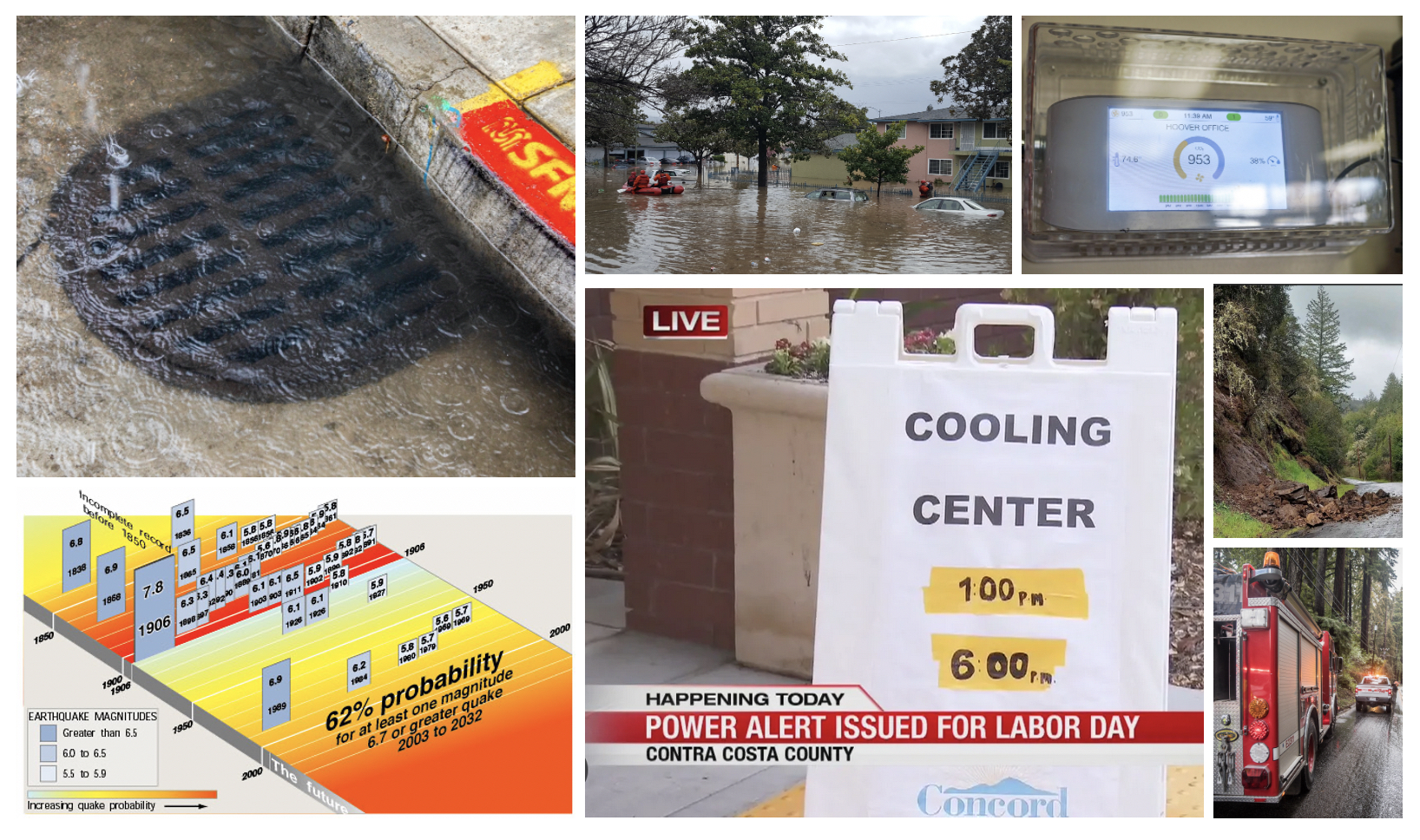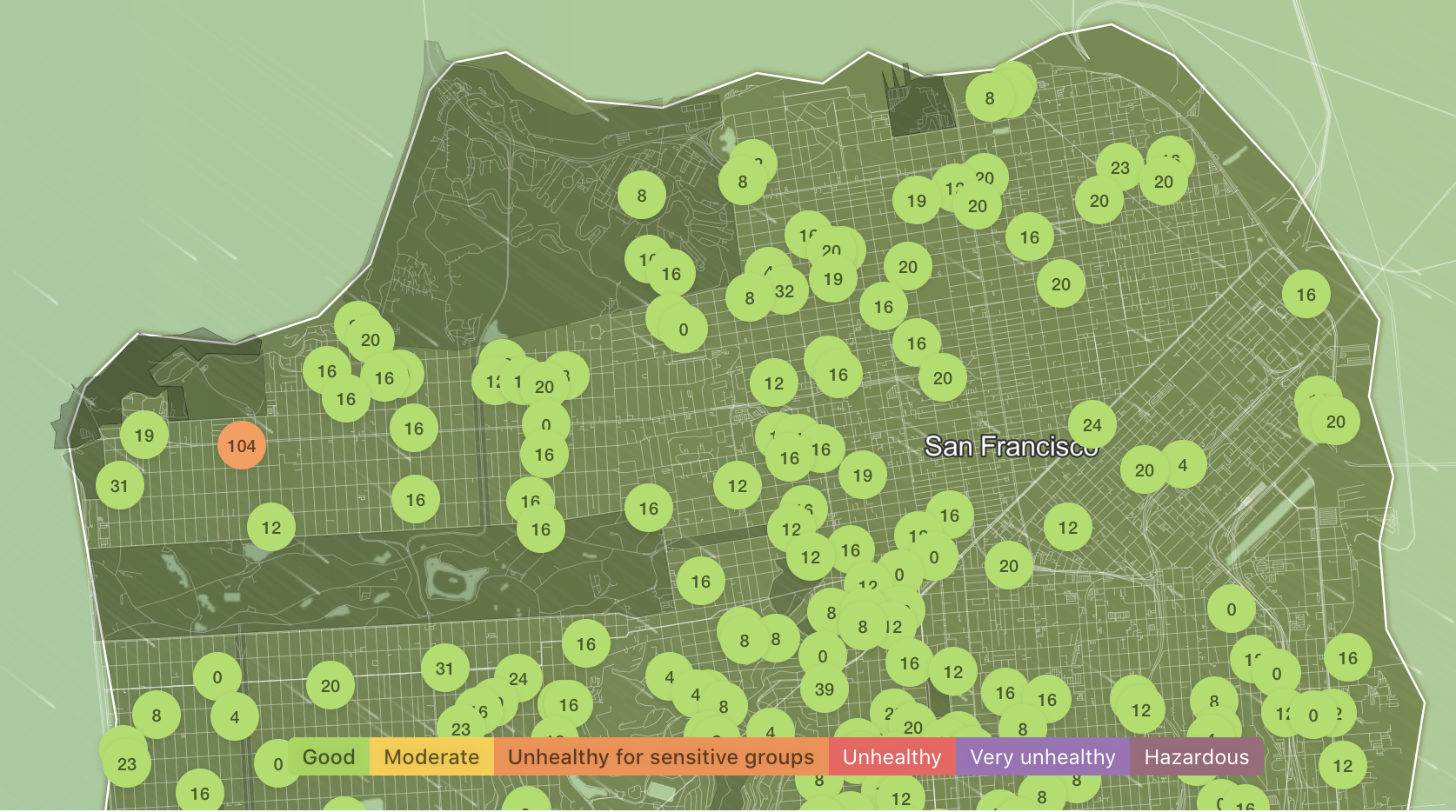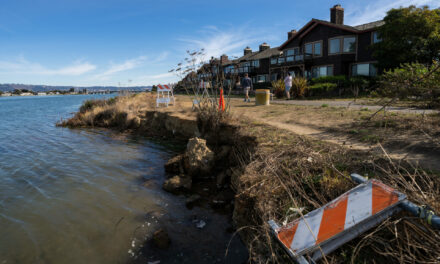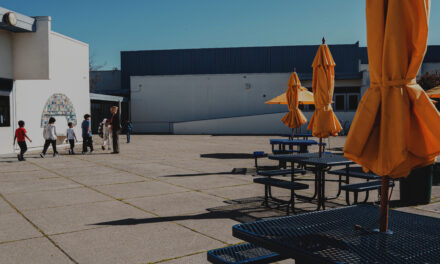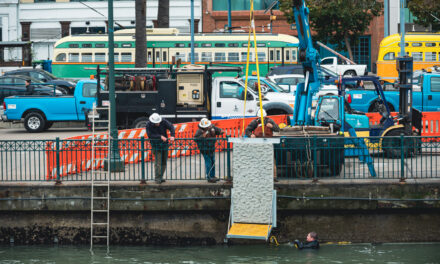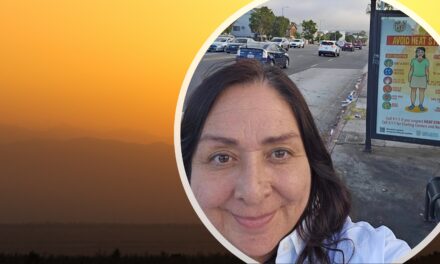Finding the Throughline in Multi-Hazard Planning
Not so very long ago, certainly within the memory of most millennials, all that the Bay Area really had to fear from Mother Nature was the occasional earthquake. Terrifying when they occurred, certainly, but blessedly infrequent. The rest of the time we could all look smugly to the East, where our fellow citizens regularly contended with blizzards, tornados, hurricanes, and more.
Not anymore. Thanks to the changing climate, the Bay Area now faces increasingly frequent threats from flooding, heat, wildfire and smoke. As the hazards multiply, communities, local governments, and agencies are searching for ways to address them more holistically.
“The ways you build resilience is oftentimes similar for different types of hazards,” says Matt Wolff, of San Francisco Department of Health’s Climate and Health Program. Wolff co-leads the city’s Heat and Air Quality Resilience Project, which brings together public, private, community and academic stakeholders to develop extreme heat and wildfire smoke resilience strategies. The incidence of both hazards is increasing, and Wolff notes that the strategies for dealing with one are often effective for the other.
“It’s about protecting people from outside exposures,” he says, “focusing on building envelopes, for example, and making sure they protect against both heat and smoke. We are looking at how many co-benefits there are to any particular solution.”
IQ air quality index for San Francisco on October day.
“If you just look at each hazard one at a time, you miss a lot of opportunities,” says Matt Chadsey of Nonlinear Ventures, who consulted on a new report for the Bay Area Regional Collaborative that analyzes the climate adaptation activities of its member agencies. “The problems have been looked at in silos to some degree—coastal flooding issues and sea level rise separate from wildfire separate from air quality, and so forth. One of the things that’s pretty clear is that the more we can look at things holistically, from a community perspective, the more we increase the likelihood of collaboration, of innovative thinking, potentially more funding coming in.
The BARC report is a first step towards the development of a regional multi-hazard adaptation plan and a technical assistance program, according to BARC’s Allison Brooks. In addition to mapping the BARC member agencies’ existing adaptation efforts, as well as the relationships and resources that support them, and fitting them into the bigger picture of Bay Area adaptation, the report identifies gaps and challenges in the region’s approach to adaptation. It also assesses the technical assistance available to stakeholders, and explores opportunities for improving it.
Multihazard adaptation means more than just preparing for disasters, says Chadsey. “It’s taking a step back and looking at the whole, both the natural and the social system of the community and really addressing everything together,” he says . “It’s really trying to understand how equity and diversity play, and how local jobs and the local economy play in the actual risk mitigation activities, because there are a lot of opportunities to do more to make a healthier community overall.”
BARC is a funder of KneeDeep Times.
Other Recent Posts
Slow Progress on Shade For California’s Hottest Desert Towns
Coachella Valley communities face record temperatures with little shade. Policy changes lag as local groups push for heat equity.
In Uncertain Times, the Port of Oakland Goes Electric
A $322M grant powers Oakland’s port electrification — cleaning air, cutting emissions, and investing in community justice.
Testing Adaptation Limits: Mariposa Trails, Marin Roads & San Francisco Greenspace
In KneeDeep’s new column, The Practice, we daylight how designers, engineers and planners are helping communities adapt to a changing climate.
ReaderBoard
Once a month we share reader announcements: jobs, events, reports, and more.
Boxes of Mud Could Tell a Hopeful Sediment Story
Scientists are testing whether dredged sediment placed in nearby shallows can help our wetlands keep pace with rising seas. Tiny tracers may reveal the answer.
“I Invite Everyone To Be a Scientist”
Plant tissue culture can help endangered species adapt to climate change. Amateur plant biologist Jasmine Neal’s community lab could make this tech more accessible.
How To Explain Extreme Weather Without the Fear Factor
Fear-based messaging about extreme weather can backfire. Here are some simple metaphors to explain climate change.
Live Near a Tiny Library? Join Our Citizen Marketing Campaign
KneeDeep asks readers to place paper zines in tiny street libraries to help us reach new folks.
Join KneeDeep Times for Lightning Talks with 8 Local Reporters at SF Climate Week
Lightning Talks with 8 Reporters for SF Climate Week
Staying Wise About Fire – 5 Years Post-CZU
As insurance companies pull out and wildfire seasons intensify, Santa Cruz County residents navigate the complexities of staying fire-ready.






